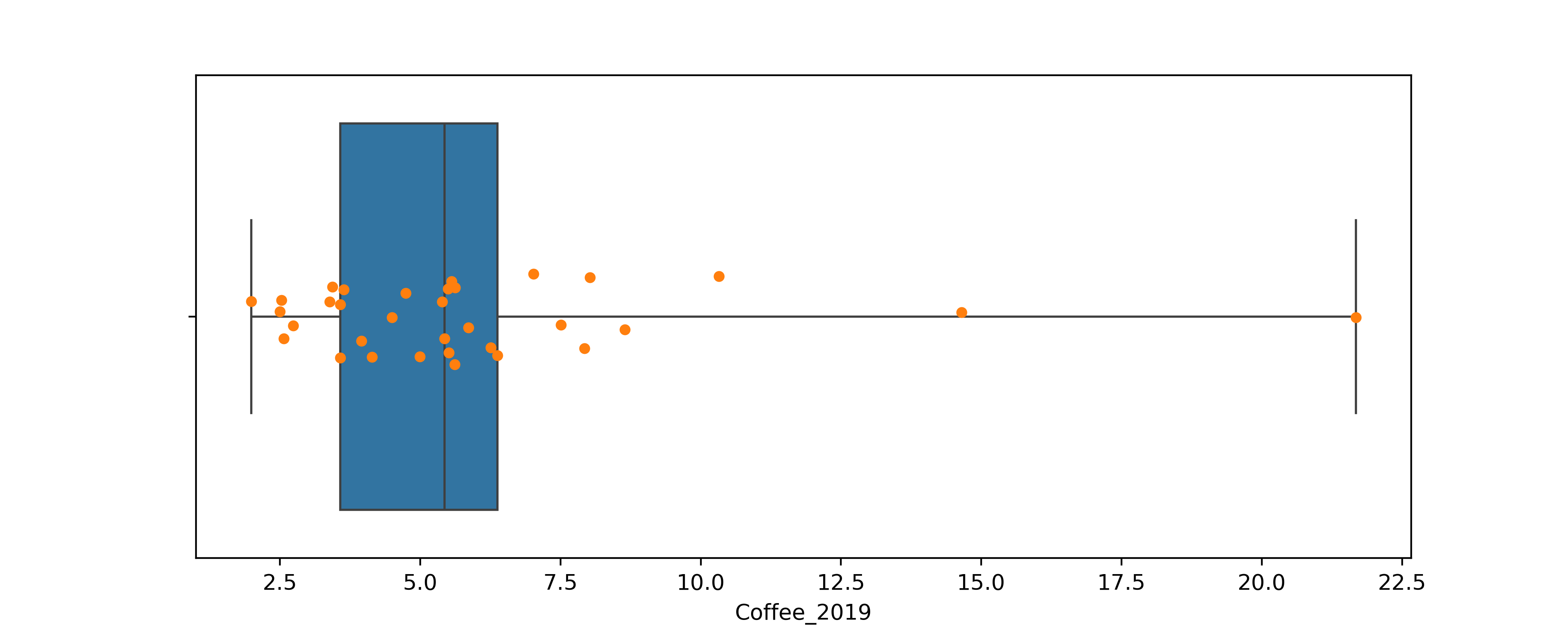ECON 0150 | Economic Data Analysis
The economist’s data analysis pipeline.
Part 1.2 | Summarizing Numerical Variables
Summarizing Numerical Variables
… use the appropriate summary tool for the variable type
Numerical Variables: Histograms
Q. Which age group has the most Starbucks customers?
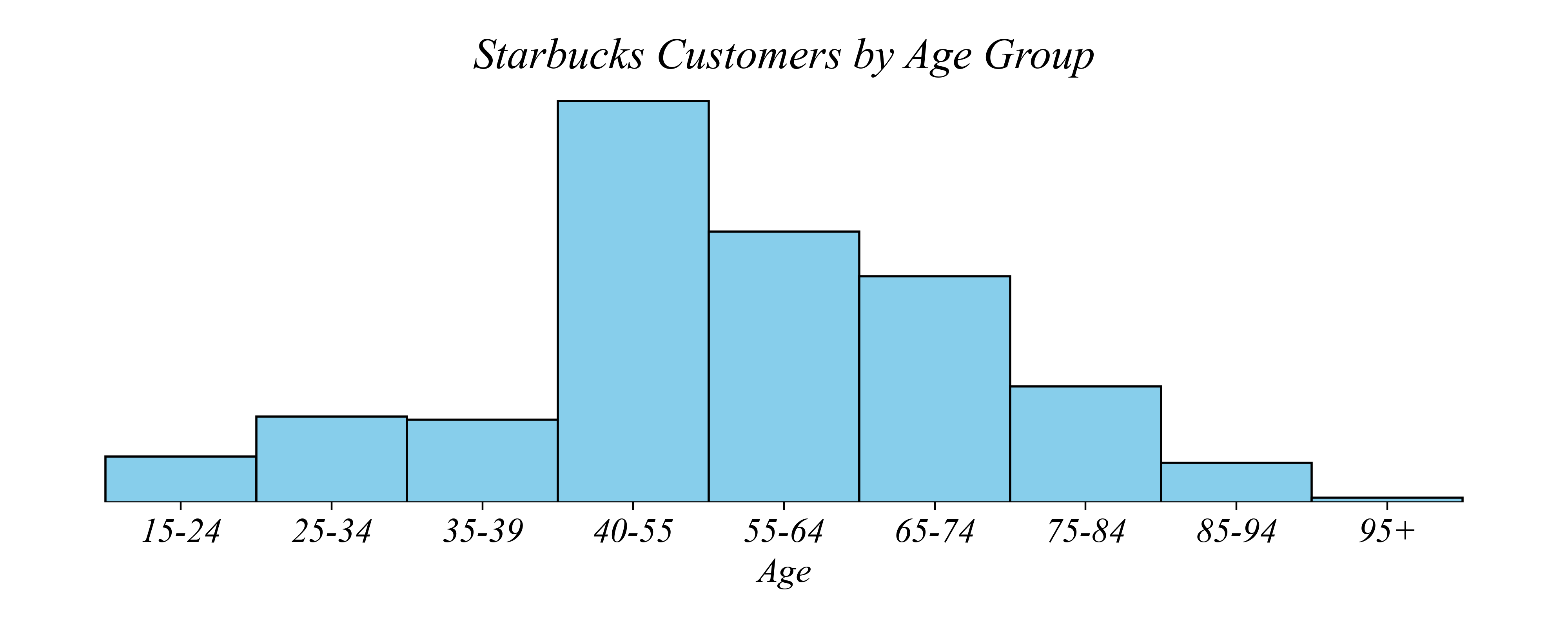
> the bin sizes aren’t even, making it hard to interpret
Numerical Variables: Histograms
Q. Which age group has the most Starbucks customers?
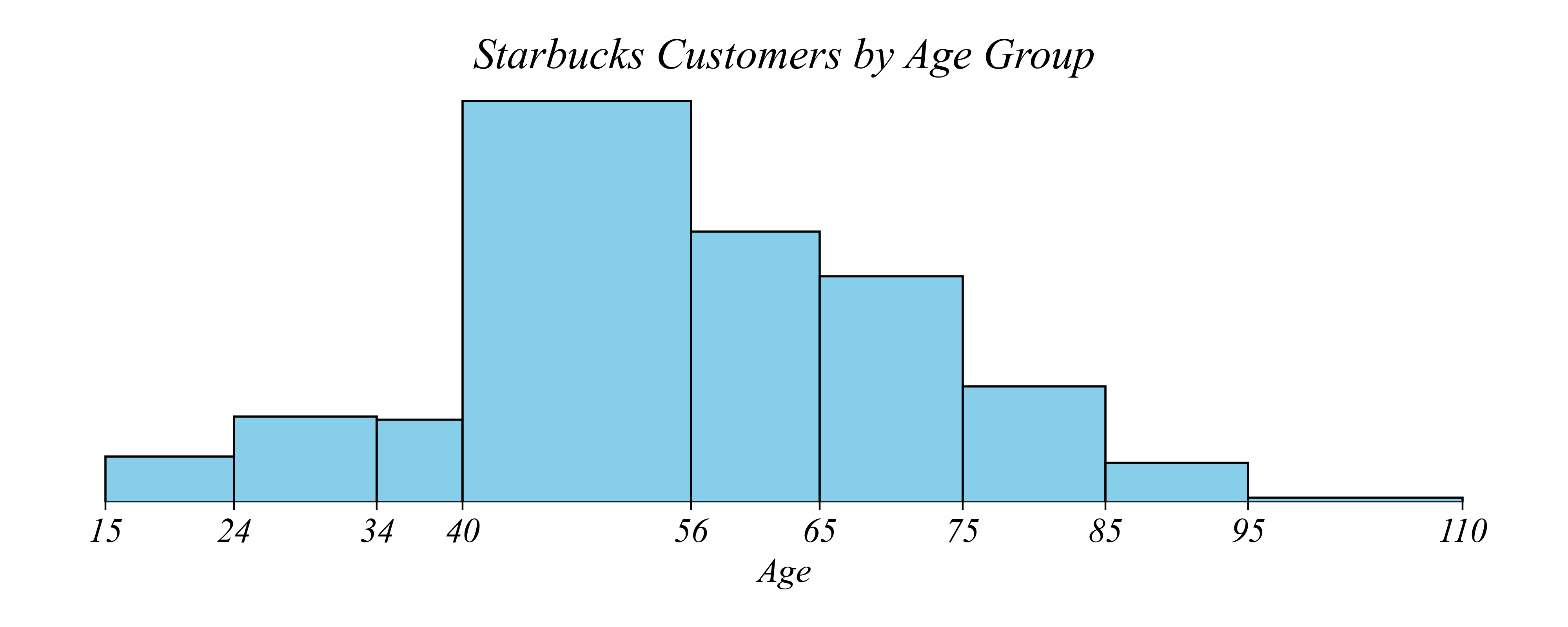
> the bin sizes aren’t even, making it hard to interpret
Histograms: Use equal sized bins
Q. Which age group has the most Starbucks customers?
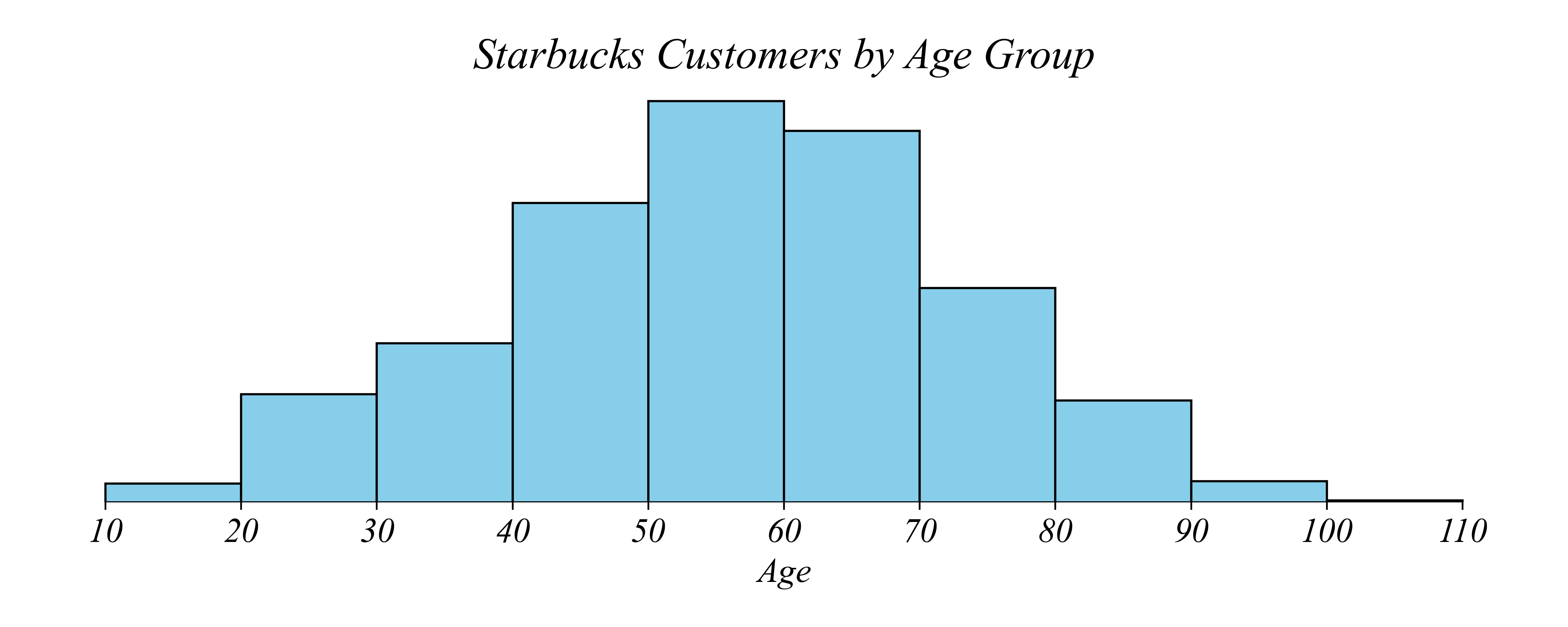
> but what if we want to distinguish between a 55 year old and a 60 year old?
Histograms: Use narrow enough bins
Q. Which age group has the most Starbucks customers?

> what if we take this even further?
> what if we compare 44 year olds to 45 year olds?
Histograms: Avoid visualizing noise
Q. Do 44 or 45 year olds spend more at Starbucks?

> we can go too far, introducing statistical noise. how do we fix the problem?
> increase the sample size or the bin width!
Histograms: Balance resolution vs noise
Q. Which age group has the most Starbucks customers?

> larger sample has less noise!
Histograms: Balance resolution vs noise
Q. Which age group has the most Starbucks customers?
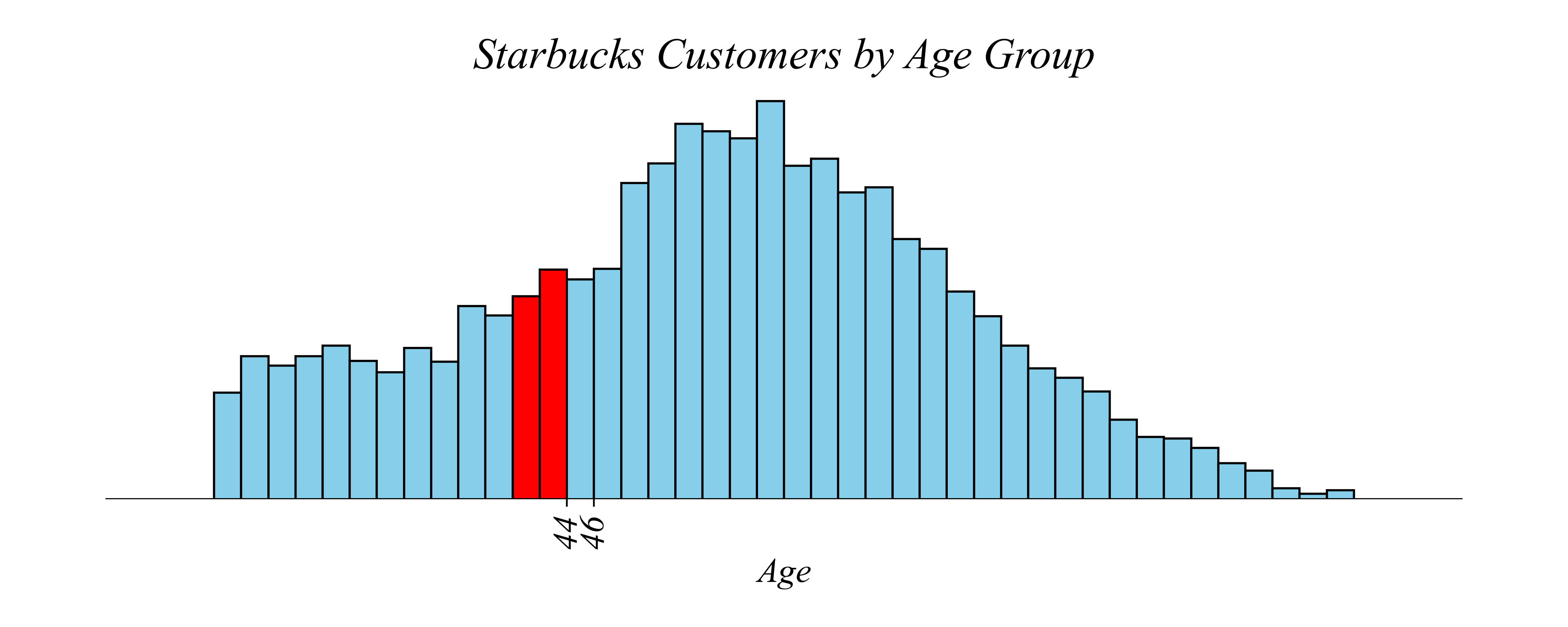
> larger bins also has less noise!
Histograms: Summary
… use the right summary tool for the variable type
- Use histograms to visualize continuous variables.
- Make histograms with equally sized bins.
- Histograms with bins that are too narrow increase statistical noise, which can obscure underlying relationships.
Exercise 1.2: Histograms
Q. Which age group among those making $40k or less has the most Starbucks customers?
Lets use the data to examine whether customers between 45 - 55 years old spend the most among customers making less than $40k.
Data: Starbucks_Customer_Profiles_40k.csv
Exercise 1.2: Histograms
Q. Which age group among those making $40k or less has the most Starbucks customers?

Numerical Variables: Histograms
Q. Which countries drank an average amount of coffee?
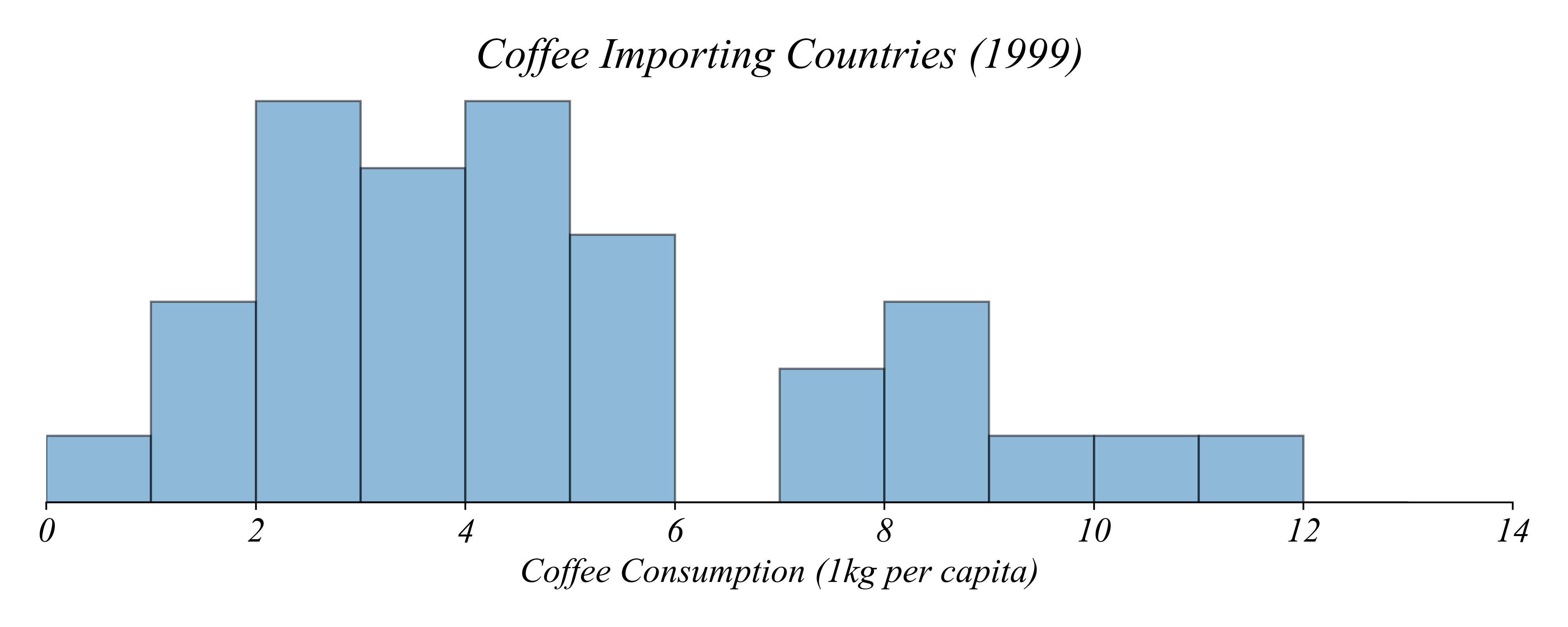
> histogram bins make it impossible to see the exact values
Numerical Variables: Histograms
Q. Which countries drank the most coffee in 1999?

> again, histograms make it difficult to see statistical measures
Numerical Variables: Boxplots
Q. Which countries drank the most coffee in 1999?
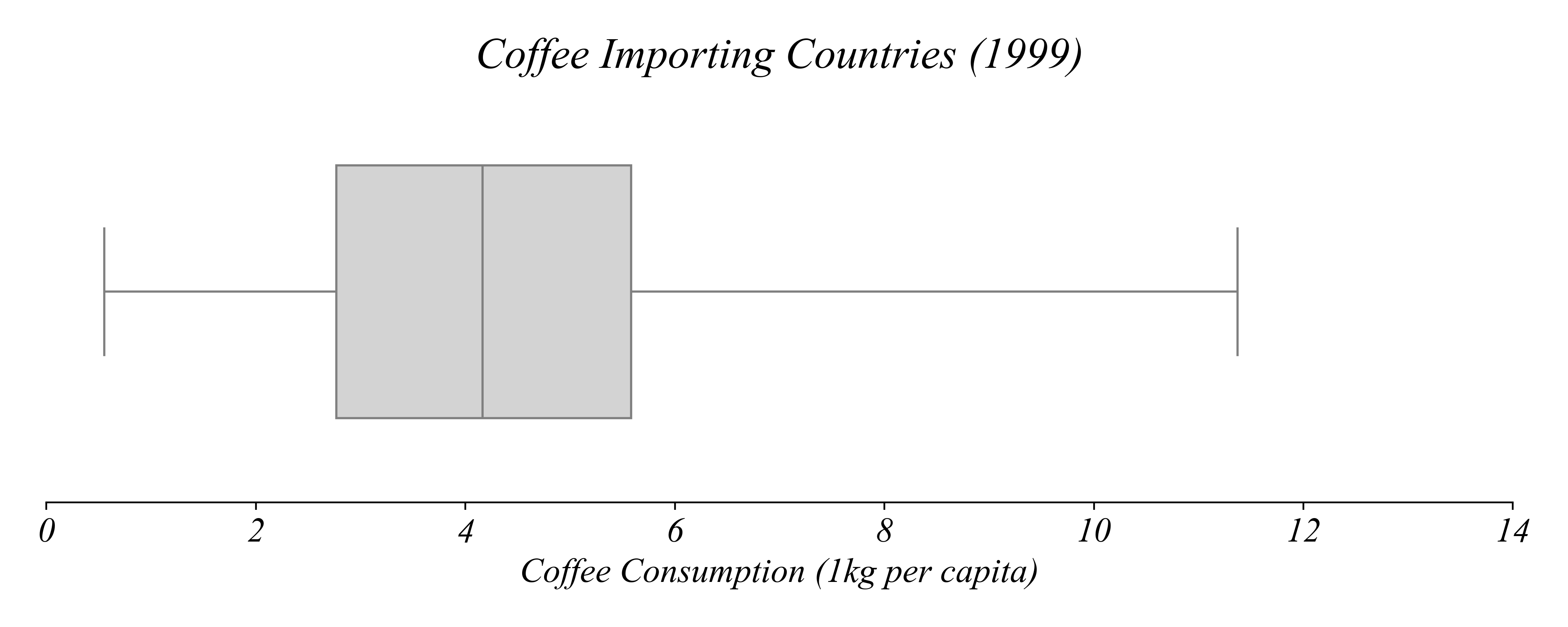
> as we’ll see, boxplots can tell us about quartiles
> but boxplots are still pretty unclear for our question
Boxplots + Stripplots
Q. Which countries drank the most coffee in 1999?
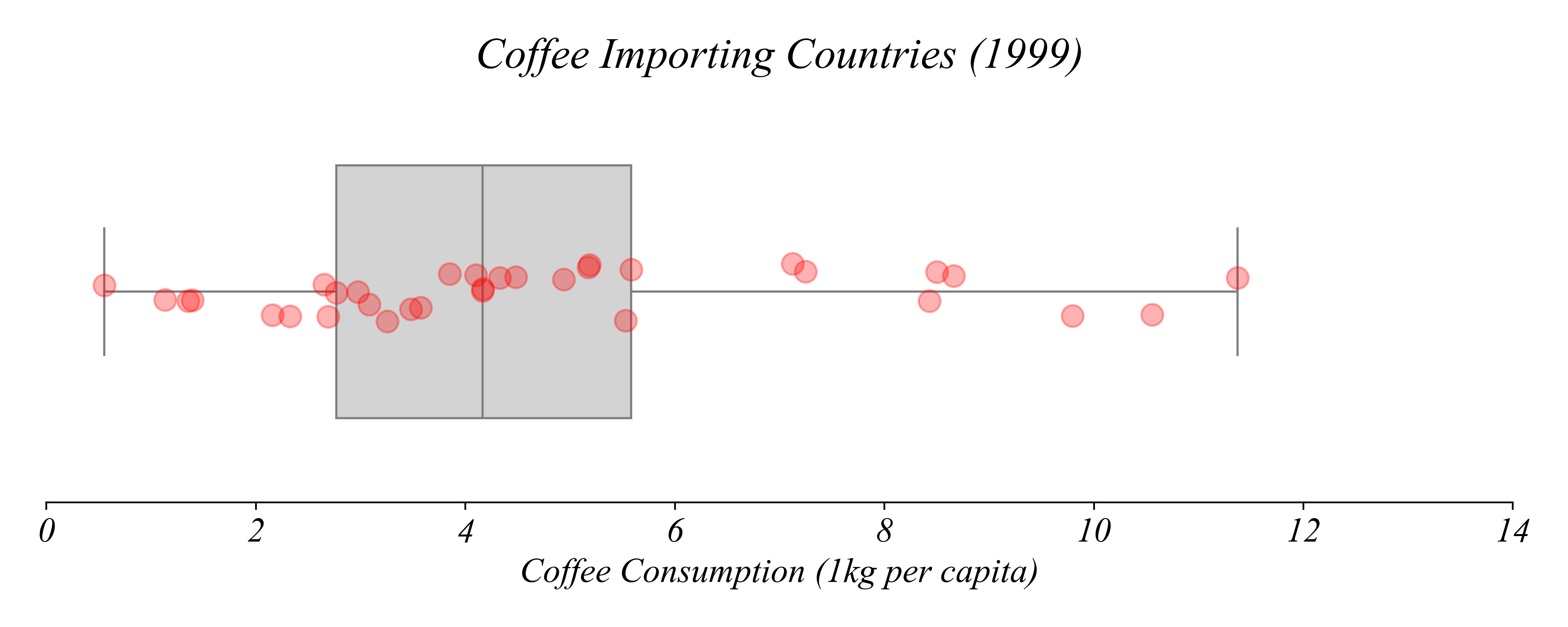
> here we can see the datapoints directly with the boxplot
> each point represents a country’s coffee consumption
Boxplots + Stripplots
Q. Which countries drank the most coffee in 1999?
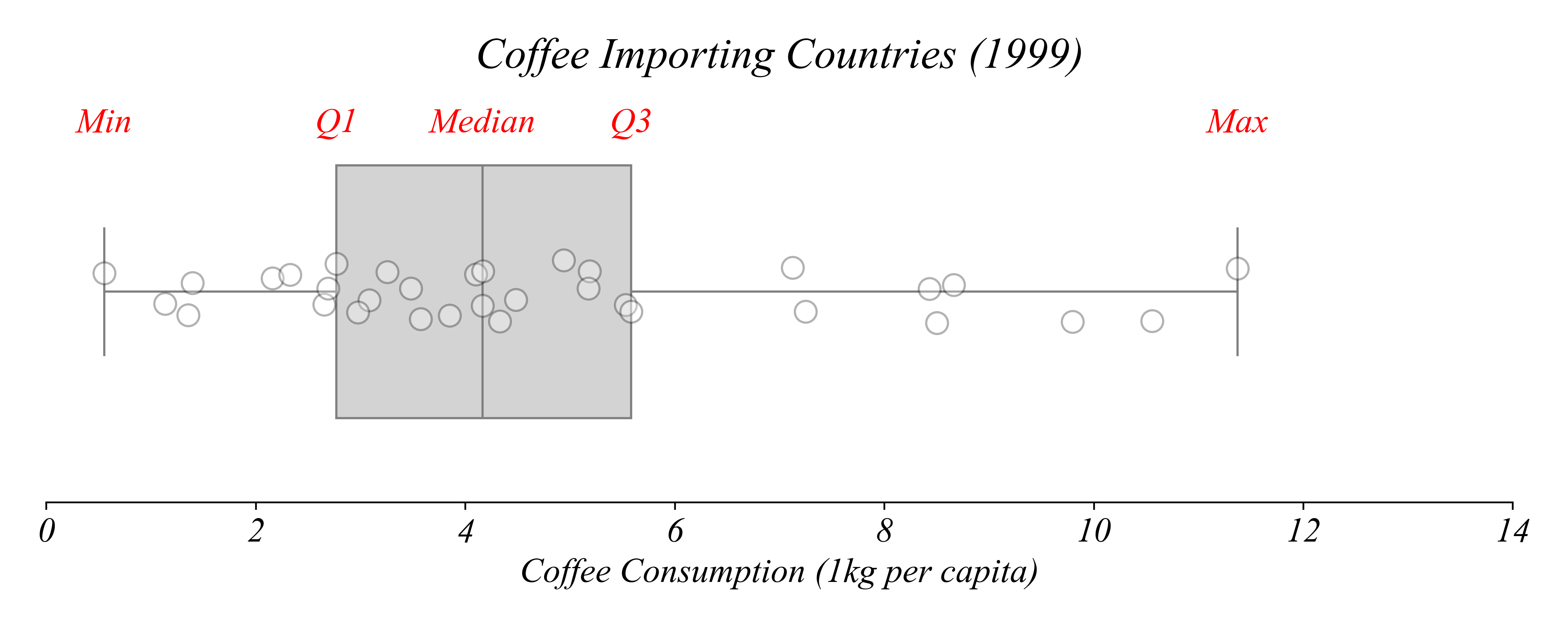
> each element of the boxplot represents one of these five quartiles
Boxplots + Stripplots
Which countries consumed more than 8 kg per capita?
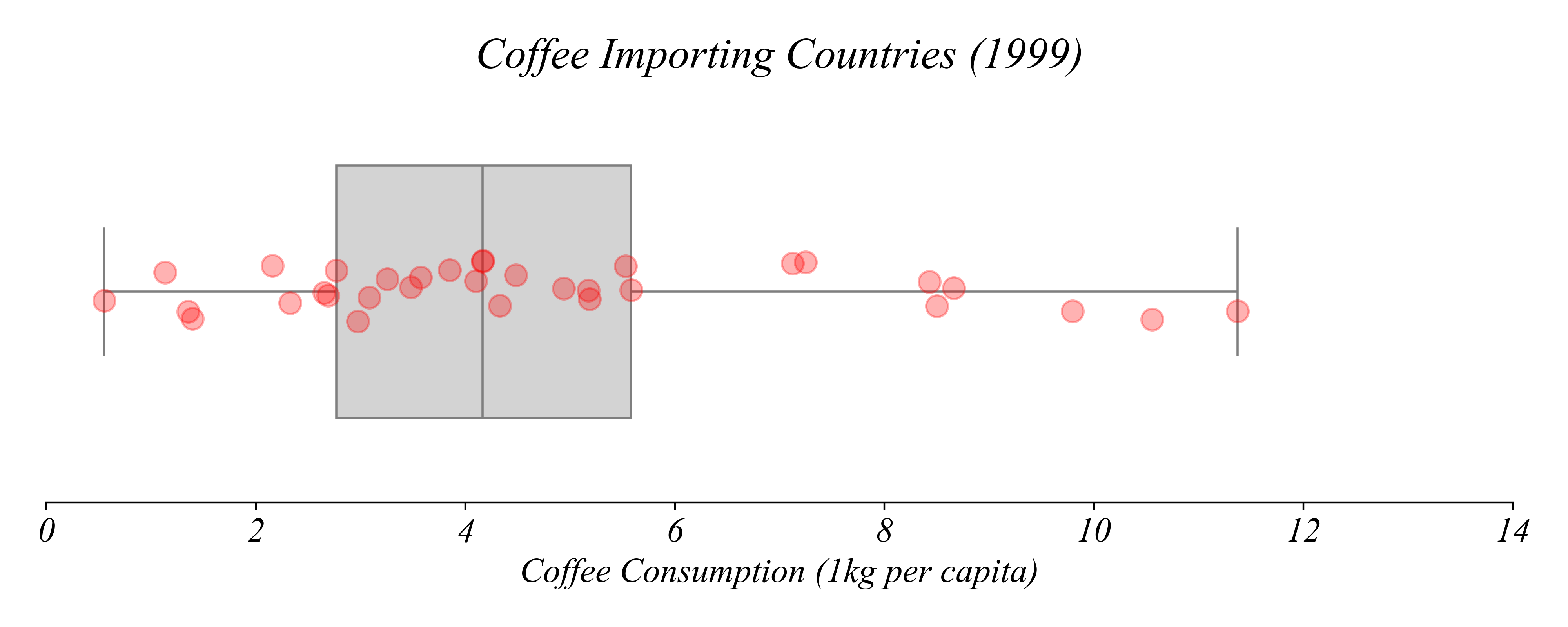
Boxplots + Stripplots
Which countries consumed more than 8 kg per capita?

> we can highlight the relevant subsets of the data
Boxplots + Stripplots
Which country consumed the most coffee per capita?

> we can find the exact values according to quartiles
Boxplots + Stripplots
Which country consumed the most coffee per capita?
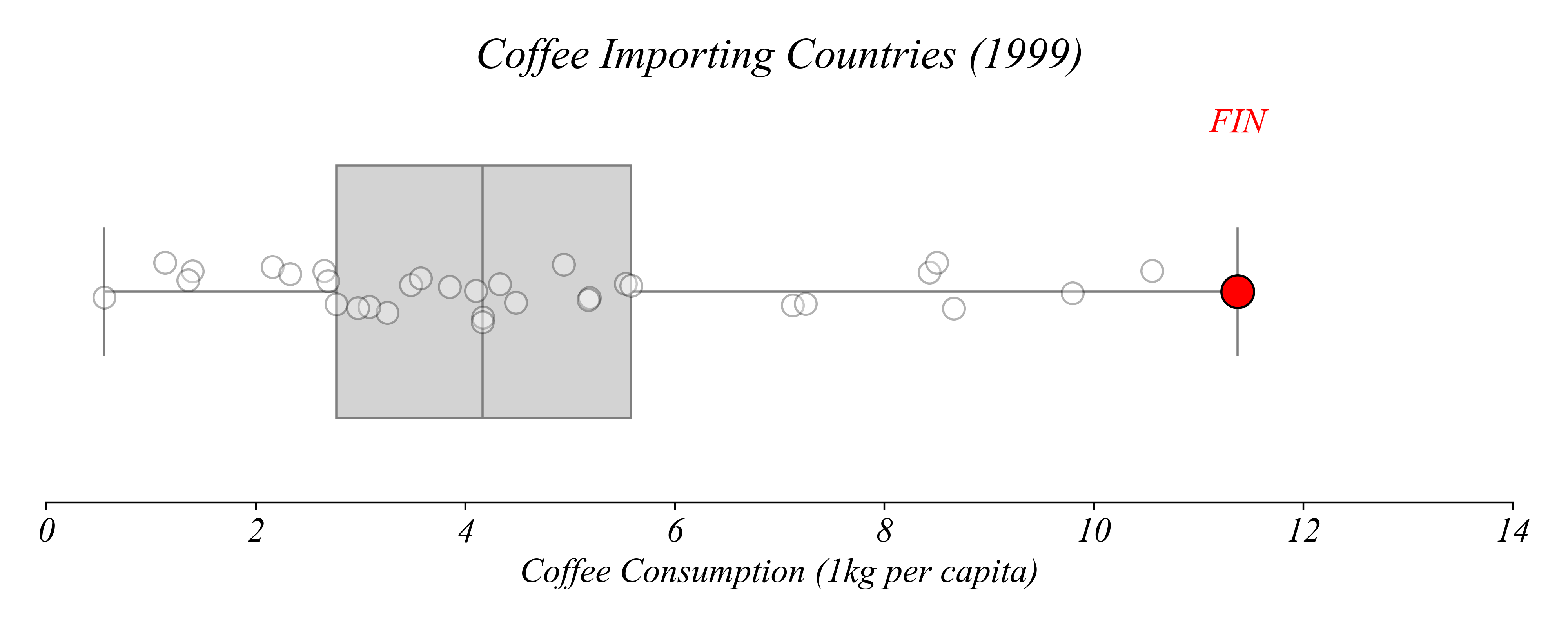
> we can find the exact values according to quartiles
> Finland consumed the most coffee per capita in 1999
Boxplots + Stripplots
Which country consumed the least coffee per capita?

Boxplots + Stripplots
Which country consumed the least coffee per capita?
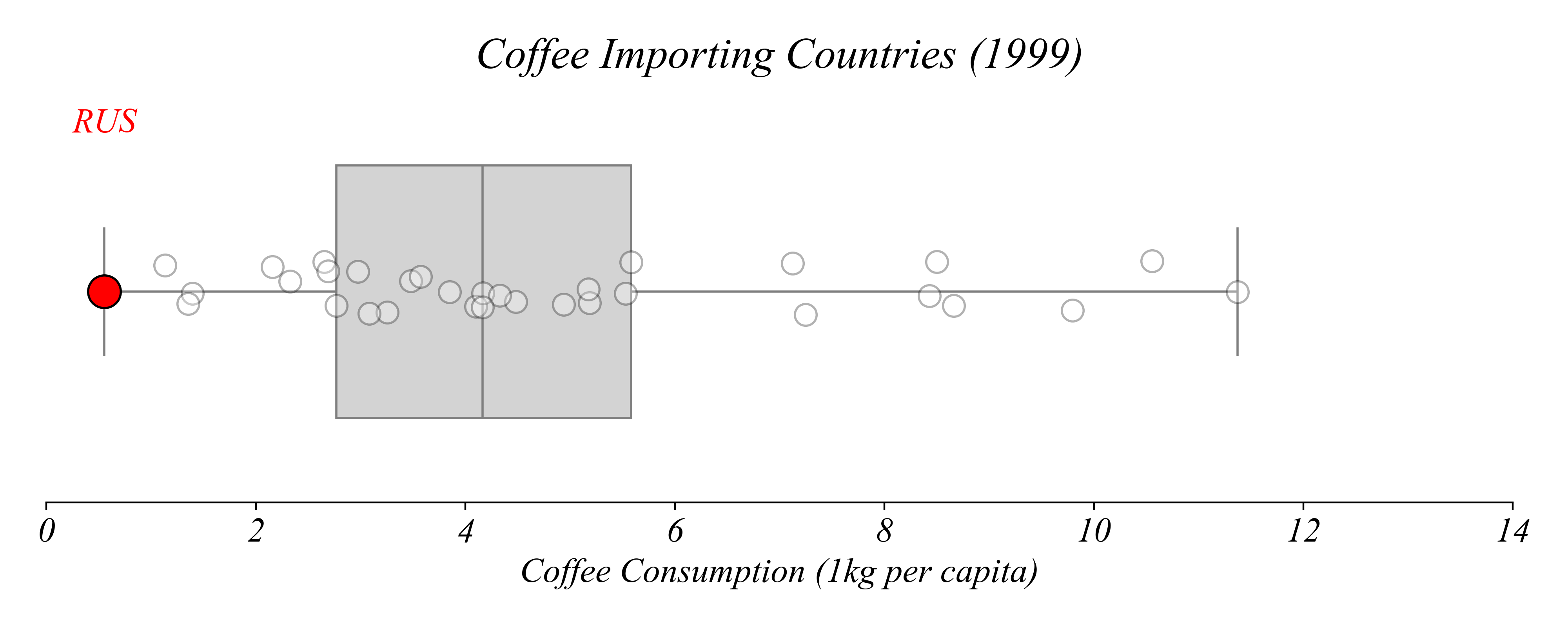
> Russia consumed the least coffee per capita in 1999
Boxplots + Stripplots
How about the median?

Boxplots + Stripplots
How about the median?
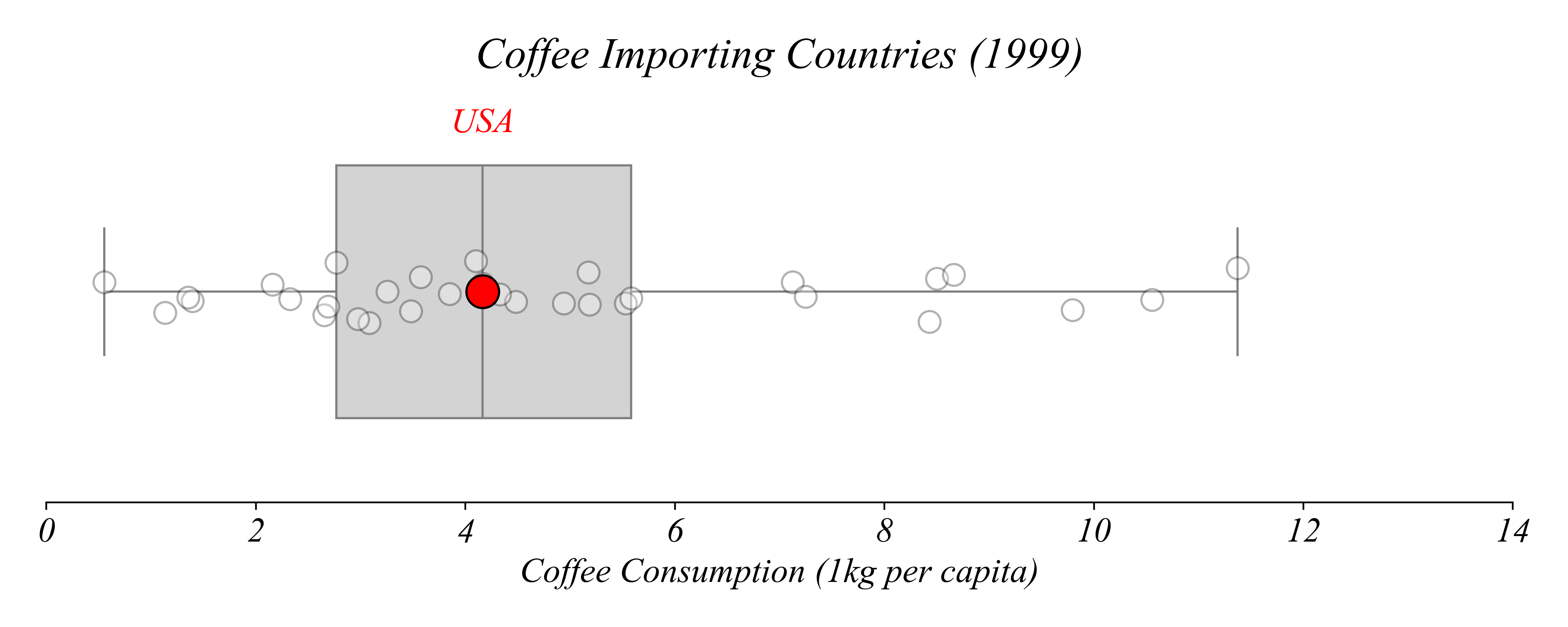
> the US!
Boxplots + Stripplots
Which country consumes more than exactly 25% of countries?

Boxplots + Stripplots
Which country consumes more than exactly 25% of countries?
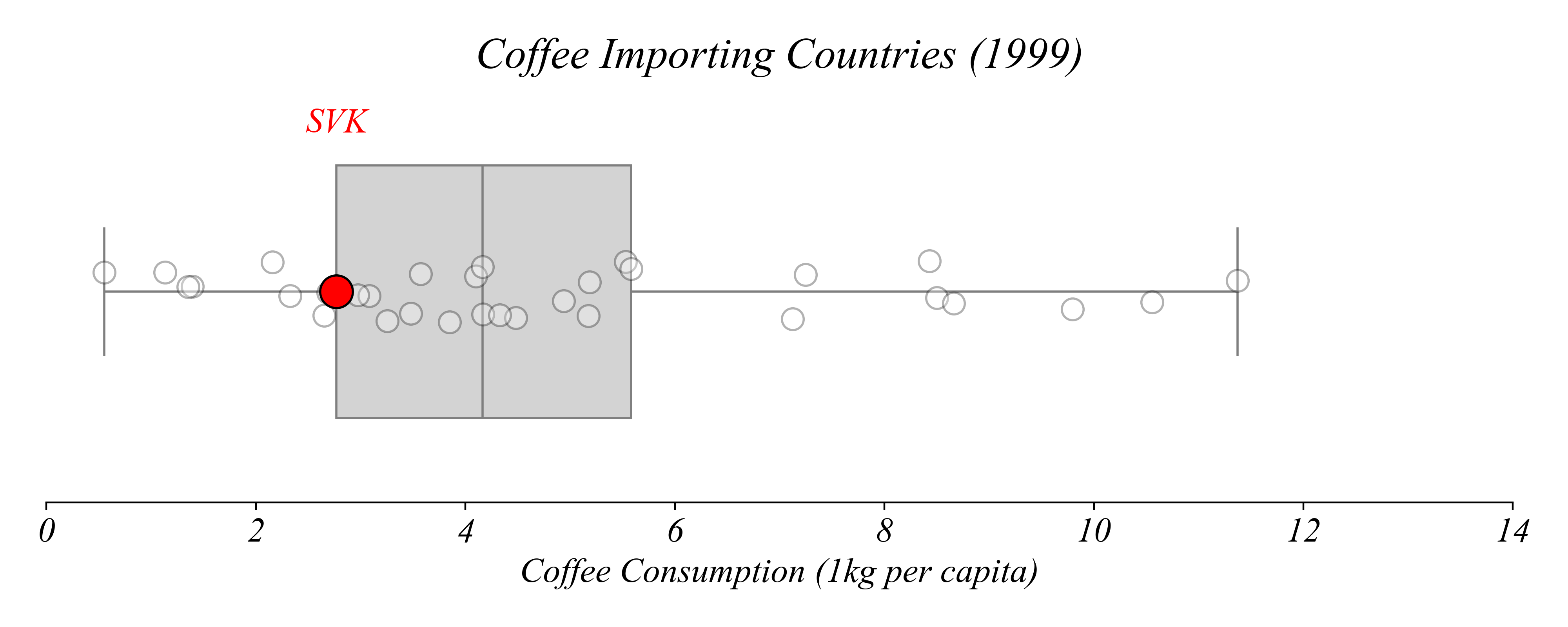
> Slovakia!
Boxplots + Stripplots
Which country consumes more than exactly 75% of countries?

Boxplots + Stripplots
Which country consumes more than exactly 75% of countries?
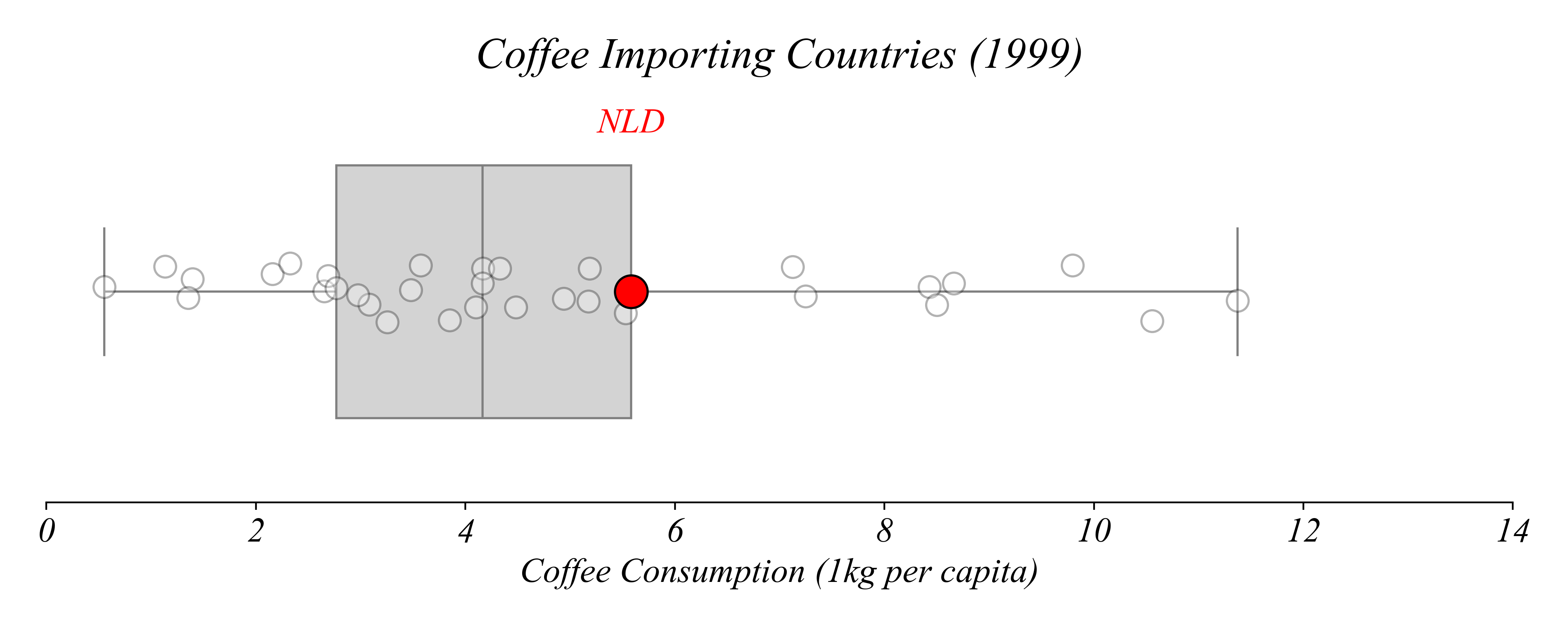
> Netherlands
Boxplots + Stripplots
Boxplots show quartiles; stripplots show the data.
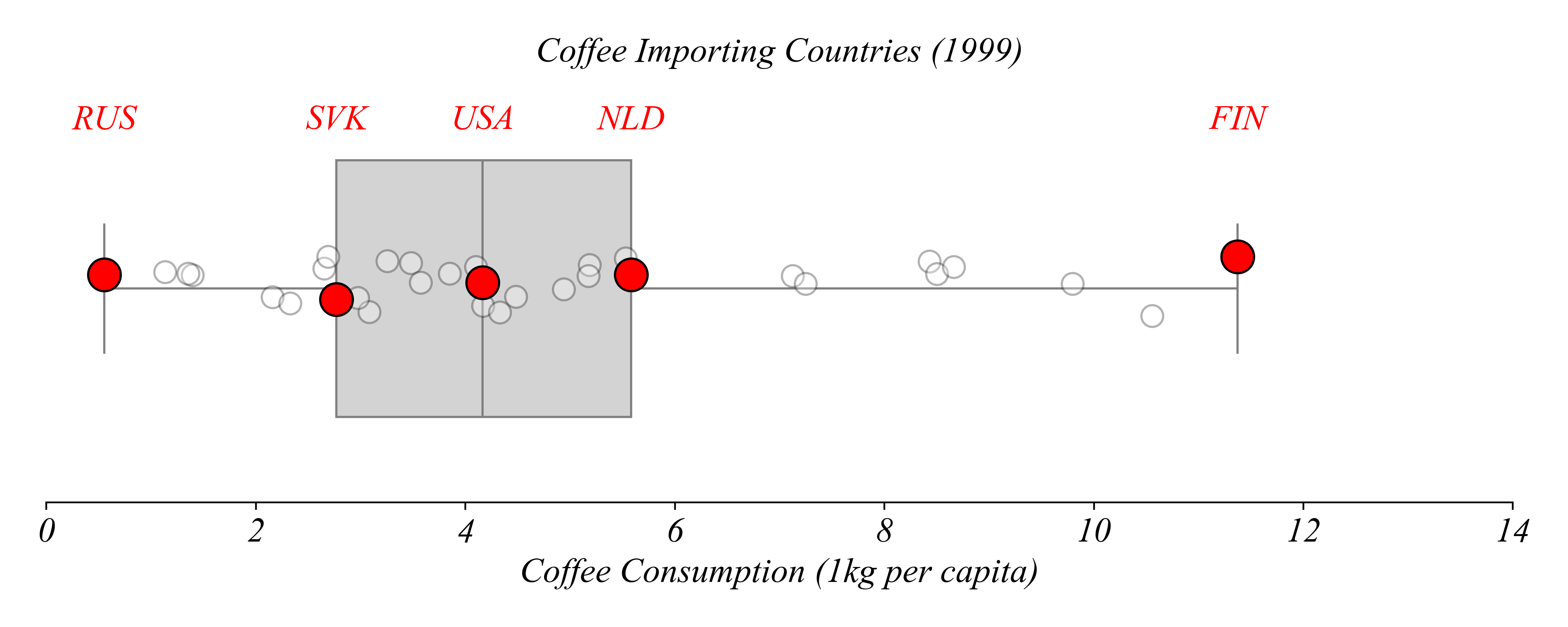
Boxplots + Stripplots: Summary
Boxplots show quartiles; stripplots show the data.
- Boxplots make it easy to show the quartiles.
- Stripplots can show the distribution of the data.
- We can highlight subsets of the data.
Exercise 1.2: Boxplots + Stripplots
Show the distribution of coffee consumption per capita in 2019.
Lets use a boxplot and stripplot to examine the distribution of coffee consumption per capita among coffee-importing countries in 2019.
- Data:
Coffee_Per_Cap_2019.csv
Exercise 1.2: Boxplots + Stripplots
Show the distribution of coffee consumption per capita in 2019.
